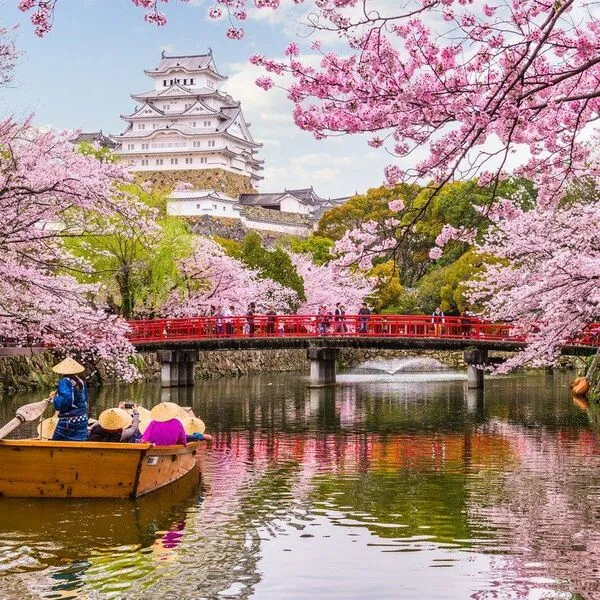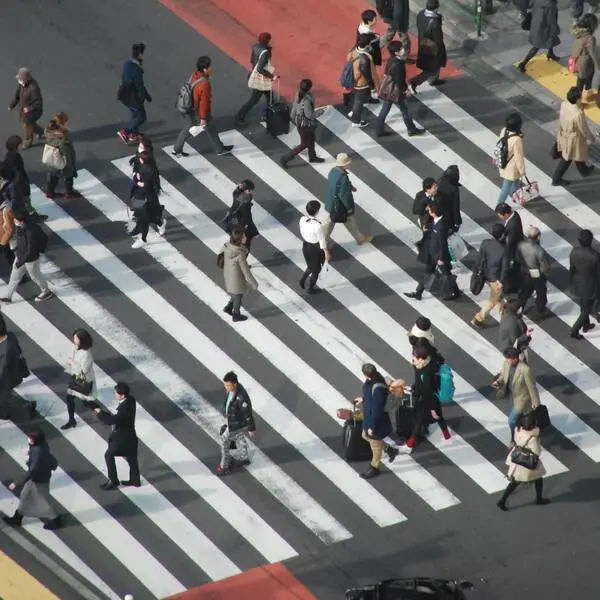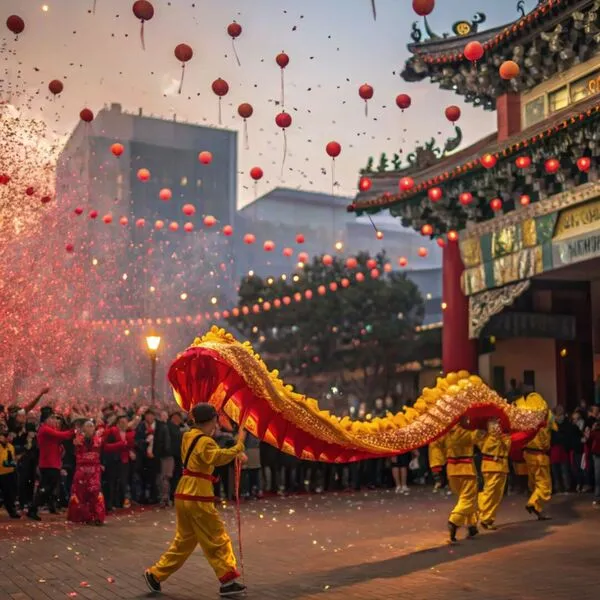Best Time to Visit Japan: A Seasonal Guide for Every Traveler
May 14, 2025

Japan is a country where timing adds depth to every journey. With four distinct seasons and a long list of local festivals, natural spectacles, and cultural rituals, choosing the best time to visit Japan can be the difference between a good trip and an unforgettable one. From the snowy peaks of Hokkaido to the tropical beaches of Okinawa, timing your visit means more than checking the weather. It means connecting with the rhythm of daily life, from plum blossoms in February to the vibrant foliage of November.
Spring is often the most romanticized season, and with good reason. The best time to visit Japan for cherry blossoms draws millions of visitors hoping to catch the brief but beautiful bloom. Cities like Kyoto, Tokyo, and Osaka come alive with picnics under the sakura trees and streets dressed in shades of pink and white. But cherry blossoms are just one layer of Japan’s seasonal character. Summer buzzes with fireworks and outdoor festivals, autumn delivers golden temples framed by fiery maple leaves, and winter reveals a quiet, snow-covered side of Japan in places like Sapporo and Nagano.
The best time of year to visit Japan depends on what you hope to experience. Those drawn to traditional culture might prefer autumn for its serene weather and temple events. Nature lovers chasing cherry blossoms or fall foliage will want to aim for specific weeks when the blooms or leaves reach their peak. Budget travelers, on the other hand, often favor the shoulder seasons of late May and early November for lower prices and thinner crowds. Knowing what each season brings allows you to plan a trip tailored to your style.
Japan’s geography adds another layer to your decision. Hokkaido’s winters begin early and last long, while Okinawa enjoys beach weather well into November. Spring arrives in Tokyo before it reaches the northern cities, and cherry blossom season can vary by as much as six weeks depending on location. That is why choosing the best time to visit Japan involves more than just marking a date on the calendar. It is about matching your plans to the landscape and energy of each region.
For first-time travelers and returning visitors alike, the right timing brings Japan into sharper focus. Whether you are looking for the best times to visit Japan for hiking, seasonal foods, festivals, or cultural depth, there is a perfect window for your adventure. Picking the right moment means clearer skies, richer colors, and a more personal connection with everything from temples to street markets. Let the seasons shape your story.
Plan Your Visit: Japan by Season, City, and Culture
When Japan Shines: A Seasonal Breakdown for Every Traveler

Japan is a country defined by its seasons. Each part of the year offers something unique, making the question of the best time to visit Japan more about your personal travel goals than a single right answer. Whether you want to stroll under cherry blossoms in Kyoto, hike the Japanese Alps during summer, admire the golden leaves of autumn in Tokyo, or relax in a steaming onsen surrounded by snow in Hokkaido, the seasons guide everything from weather to cultural rhythm.
The best times to visit Japan vary depending on where you are and what you are seeking. Spring is famous for its fleeting beauty, while summer celebrates energy and tradition with fireworks and matsuri. Autumn rewards visitors with crisp air and fiery foliage, and winter brings a serene calm accented by snow-covered temples and seasonal food specialties. Understanding how each season changes the feel of cities like Osaka, Nara, and Kanazawa allows travelers to choose the perfect moment to explore.
Many seasoned travelers agree that aligning your visit with seasonal highlights helps you connect more deeply with the culture and landscape. The best time of year to visit Japan might mean joining a cherry blossom viewing party in March or experiencing the quiet magic of Kyoto’s moss gardens in November. Choosing your travel window based on the natural rhythm of the country ensures that every moment feels intentional, immersive, and unforgettable.
Spring Magic: Cherry Blossoms and Mild Days - March to May
Spring in Japan is one of the most iconic and sought-after travel periods. For many, it represents the best time to visit Japan thanks to the mild temperatures, blooming flowers, and cultural traditions that define the season. The highlight is without a doubt the cherry blossom season, known locally as sakura. From late March through early April, cities like Tokyo, Kyoto, and Hiroshima are transformed into pink and white dreamscapes, drawing visitors from around the world.
The best time to visit Japan for cherry blossoms depends on the region. In southern areas like Kyushu, blooms may start as early as mid-March, while northern cities such as Sapporo see their sakura season in late April to early May. Planning around the peak bloom dates takes some research but offers incredible rewards. Locals and travelers alike celebrate hanami, the traditional flower-viewing parties that often involve picnics under the trees, food stalls, and a festive atmosphere.
Beyond the blossoms, spring offers comfortable daytime temperatures ranging from the high 50s to the low 70s Fahrenheit. This makes it ideal for exploring outdoor gardens, historic temples, and walking paths without the humidity of summer or the chill of winter. For those visiting Japan for the first time, spring is frequently recommended as the best time of year to visit Japan, combining scenic beauty with cultural richness and vibrant city life.
Summer Energy: Festivals and Mountain Escapes - June to August
Summer in Japan brings a unique blend of heat, energy, and celebration. While the humidity and high temperatures may not make it the first choice for every traveler, this season is rich with culture, fireworks, and outdoor adventure. For many, the best time to visit Japan for festivals and local color is July and August when cities and small towns alike host centuries-old matsuri, complete with elaborate parades, traditional costumes, and late-night street food.
Major events like the Gion Matsuri in Kyoto, Tenjin Matsuri in Osaka, and Sumidagawa Fireworks Festival in Tokyo attract both locals and international visitors. These gatherings provide a vibrant glimpse into Japanese tradition and offer experiences that are only available during these warmer months. From taiko drumming to yukata-clad crowds, summer in Japan is filled with sights, sounds, and flavors that are not found at any other time of year.
For those looking to escape the heat, mountain regions like the Japanese Alps, Nagano, or even Hokkaido offer cooler climates and breathtaking hiking opportunities. These destinations provide a refreshing contrast to the heat of cities like Tokyo or Hiroshima. Whether you are chasing cultural immersion or natural beauty, summer offers some of the best times to visit Japan if you plan your route and pace wisely.
Autumn Beauty: Foliage and Tranquility - September to November
Autumn is often considered the best time to visit Japan for travelers who value cooler weather, vibrant landscapes, and a peaceful atmosphere. From late September through November, the country transforms into a canvas of gold, red, and amber as the leaves begin to change. The fall foliage, known locally as koyo, draws nearly as much admiration as the cherry blossoms do in spring. Kyoto, Nara, and Nikko are especially popular for their historic temples surrounded by colorful maples and ginkgo trees.
The best time of year to visit Japan for autumn leaves depends on the region. Northern areas like Hokkaido begin to turn as early as late September, while central and southern parts of the country peak in late October or early November. Many travelers plan their routes around these color changes, hiking through national parks or exploring temple grounds as crisp air and falling leaves enhance the mood. Autumn is also harvest season, making it a great time to sample seasonal foods like roasted sweet potatoes, chestnuts, and matsutake mushrooms.
This season combines ideal weather with fewer crowds, particularly compared to spring and summer. It is a favorite for photographers, honeymooners, and those seeking a more meditative travel experience. The skies are typically clear and the humidity low, making it one of the most comfortable times to explore Japan on foot. If you are looking for balance between culture, nature, and calm, fall is one of the best times to visit Japan.
Winter Calm: Snow, Light Festivals, and Hot Springs -December to February
Winter in Japan brings a peaceful, almost magical quality to the landscape. For those who appreciate quiet moments, snowy scenes, and seasonal traditions, December through February is a wonderful time to visit. The northern regions like Hokkaido and the Japanese Alps become hubs for snow sports, attracting skiers and snowboarders from around the world. Cities like Sapporo host iconic events such as the Sapporo Snow Festival, where massive ice sculptures light up the chilly nights.
Aside from the slopes, winter is the best time to visit Japan for those who want to soak in steaming hot springs while surrounded by snow. The contrast between cold mountain air and warm mineral-rich waters makes onsen towns like Kusatsu, Hakone, and Beppu especially inviting. Seasonal cuisine like oden, hot pot, and grilled mochi also takes center stage during this period, adding warmth and comfort to every meal.
The best times to visit Japan for winter festivals and fewer crowds often fall in January and early February, after the New Year holidays. Tourist numbers tend to drop, making popular destinations more accessible and affordable. While some regions can get very cold, central cities like Tokyo and Osaka experience milder winters, allowing for easy sightseeing without the heat of summer or the rush of spring. For a cozy, atmospheric escape, winter provides a distinct charm unlike any other season in Japan.
Best Time to Visit Japan for Every Budget and Crowd Level

Timing your trip to Japan can significantly influence your overall experience, especially when it comes to managing your travel budget and avoiding heavy tourist traffic. While Japan is welcoming year-round, understanding the ebb and flow of tourism can help you plan a trip that is both cost-effective and more relaxed. Many travelers agree that the best time to visit Japan for affordability and fewer crowds falls in the shoulder seasons of late spring and early autumn.
During these transitional periods, typically late May to early June and mid-September to early November flight prices tend to dip, hotel availability increases, and tourist hotspots like Kyoto, Osaka, and Tokyo are less congested. These months also offer pleasant weather, making them ideal for exploring cities, countryside, and cultural landmarks without the heat of summer or the peak rates of holiday seasons. For travelers seeking value without sacrificing comfort, these are considered the best times to visit Japan.
The best time of year to visit Japan for budget travelers often excludes Golden Week in early May and the New Year period, both of which see dramatic price hikes and crowded public spaces. If you are flexible with your dates, mid-week travel and avoiding national holidays can also lead to further savings. Planning around these windows allows you to experience Japan’s rich culture and natural beauty without the premium price tag or overwhelming crowds.
Traveling on a Budget: Low-Season Advantages
For travelers who want to explore Japan without overspending, the low season provides significant benefits. The best time to visit Japan for budget-conscious travelers is typically in the months of January, February, and late May. These periods fall outside major holidays and cherry blossom season, offering lower airfare and discounted accommodations. Visiting during these months means more flexibility, more room to explore, and more yen in your pocket.
Tourism tends to slow down in winter after the New Year festivities, making it easier to find hotel deals, reduced entrance fees, and better access to popular destinations. Cities like Kyoto and Tokyo, which are often bustling during peak times, become more manageable and peaceful. If you are aiming to enjoy cultural experiences like tea ceremonies, museums, or shrine visits without rushing or waiting in line, these off-peak months provide the perfect setting.
In addition to the financial advantages, traveling in the low season allows you to experience a different side of Japan. Smaller crowds create more intimate encounters with locals, deeper engagement with the culture, and a greater sense of tranquility in places like Nara Park or Kanazawa’s historic districts. Budget travelers often find that this quieter time of year makes for a more personal and fulfilling journey through Japan.
Avoiding the Crowds: Shoulder Season Benefits
For many travelers, the best time to visit Japan is when popular attractions are peaceful and streets are calm. The shoulder seasons, late spring and early autumn offer the perfect blend of moderate weather, cultural richness, and fewer tourists. Visiting in May after Golden Week or in October after the summer rush lets you enjoy places like Tokyo’s neighborhoods or Kyoto’s temples without long lines or crowded transport.
The shoulder season is also known for its comfortable weather. Temperatures are mild, humidity is low, and the skies are generally clear, especially in October and November. Whether you are hiking in the Japanese Alps, walking the Philosopher’s Path, or photographing Mount Fuji from Lake Kawaguchi, the lack of heavy foot traffic makes for a smoother and more immersive experience. Many seasoned travelers consider this the best time of year to visit Japan for balance and flexibility.
Cultural events and seasonal foods also shine during these months. Autumn offers fresh harvests and tea ceremonies, while spring sees gardens in full bloom just after sakura season ends. These quieter months allow you to enjoy Japan’s rhythm at your own pace and on your own terms. If you are searching for the best times to visit Japan without the crowds, the shoulder season offers clarity, value, and space to explore.
Timing for Value: Flights, Hotels, and Local Deals
Choosing the best time to visit Japan is not only about weather and events but also about maximizing your travel budget. By planning your trip during value-rich months such as February, June, or late November, you can often find the most affordable flights and hotel rates. These periods are not tied to major holidays or school breaks, making them ideal for travelers who want to experience more while spending less.
Airfare to Japan tends to drop significantly after New Year and before the cherry blossom season begins in March. The same applies after the summer holiday season ends and before the Christmas travel rush starts. Booking during these windows can result in savings of hundreds of dollars. Domestic travel deals, including Japan Rail Pass discounts and off-peak hotel promotions, are also easier to find during these quieter times.
Hotels in cities like Osaka, Fukuoka, and Hiroshima often run seasonal campaigns offering discounted rates or free add-ons such as breakfast or late checkout. Smaller guesthouses and traditional ryokan may also offer personalized packages during these low-demand months. If you are flexible with your dates and book in advance, timing your visit to align with these value periods can stretch your budget while still giving you access to Japan’s top sights and experiences.
The Best Time to Visit Japan for Iconic Cities
Japan’s cities each have their own pulse and personality, and the best time to visit Japan often depends on which one you plan to explore. From the neon glow of Tokyo to the ancient shrines of Kyoto, timing your trip can dramatically shape how you experience each destination. Some cities thrive during festival seasons, while others shine brightest in the quiet calm of off-peak months. Knowing when to go helps you feel the soul of each city without distraction.
For many visitors, spring and autumn are the most rewarding seasons to explore Japan’s urban highlights. The best time of year to visit Japan’s cities like Kyoto or Nara often coincides with cherry blossom season in March and April or fall foliage in October and November. These months offer a mix of visual beauty and cultural significance. Street festivals, traditional performances, and seasonal cuisine bring these cities to life in ways that are impossible to replicate in other times of year.
Urban travel also benefits from smart timing to avoid high hotel rates and large crowds. Summer can be hot and crowded in Tokyo or Osaka, while winter brings quieter streets and better hotel deals. Whether you want to shop in Shibuya, walk through historic temples in Kyoto, or experience street food in Osaka, choosing the best times to visit Japan’s cities ensures you can explore deeply, comfortably, and on your own schedule.
Tokyo: Cherry Blossoms, Festivals, and City Lights
Tokyo is one of the most dynamic cities in the world and a top destination for travelers year-round. But the best time to visit Japan’s capital truly depends on what you want to see and feel. Spring in Tokyo is especially magical, with cherry blossoms transforming parks like Ueno and Shinjuku Gyoen into delicate landscapes of pink and white. Visiting in late March to early April aligns with hanami season, one of the most iconic times to experience local life and celebration.
If you are looking for energy and cultural events, summer offers fireworks festivals and bustling neighborhoods that stay alive well into the night. While temperatures and humidity can rise, events like the Sumidagawa Fireworks and Obon festivals create memorable moments filled with color and tradition. Autumn, on the other hand, brings cooler weather and golden ginkgo trees lining city boulevards, making it one of the best times to visit Japan for those who want to explore Tokyo on foot.
Winter in Tokyo provides another type of charm with illuminated streets, seasonal foods, and thinner crowds. January and February are ideal for travelers who prefer quieter attractions and lower hotel rates. Whether you want to shop in Harajuku, explore tech in Akihabara, or unwind at a local izakaya, knowing the best time of year to visit Japan for Tokyo ensures a richer and more comfortable urban experience.
Kyoto: Historic Temples and Seasonal Gardens
Kyoto is often the first city that comes to mind when people dream of traditional Japan. With over a thousand temples, serene gardens, and preserved wooden streets, timing your visit is key to experiencing its beauty without distraction. The best time to visit Japan for Kyoto is during spring and autumn when the natural surroundings enhance the cultural landmarks. Cherry blossom season in late March and early April transforms the Philosopher’s Path and Maruyama Park into iconic postcard scenes.
Autumn in Kyoto is equally breathtaking. From late October through November, vibrant maple leaves frame ancient temples like Kiyomizu-dera and Eikan-do, drawing visitors who want to photograph the city’s historic charm under a canopy of red and gold. These months offer mild weather and clear skies, perfect for exploring on foot and immersing yourself in Kyoto’s quiet elegance. If your travel goal includes culture, nature, and tradition, this is one of the best times to visit Japan.
While summer can be hot and humid, it also brings unique festivals like Gion Matsuri, where the city’s streets come alive with parades and centuries-old customs. Winter, though less popular, offers peaceful walks through snowy temple grounds and opportunities to enjoy Kyoto’s tea culture without crowds. If you are seeking balance between heritage and seasonal beauty, Kyoto is a city where timing enhances every experience.
Osaka: Food, Fireworks, and Fall Colors
Osaka is Japan’s culinary capital and a favorite for travelers who enjoy energy, flavor, and culture in one place. Known for its street food, vibrant districts like Dotonbori, and welcoming atmosphere, the best time to visit Japan for Osaka depends on whether you want to explore its famous food scene, attend a festival, or enjoy seasonal colors. Autumn is widely regarded as one of the most enjoyable seasons to explore Osaka, thanks to cooler weather and stunning fall foliage in places like Osaka Castle Park and Minoo Park.
Summer brings fireworks and local celebrations, making July and August perfect for travelers who want to experience Osaka’s lively spirit. The Tenjin Matsuri, one of Japan’s top three festivals, lights up the city with boat parades and fireworks, drawing locals and visitors alike. While it can be hot, the city’s energy and night markets offer endless entertainment. For those who love excitement and tradition, summer in Osaka is unforgettable.
Spring offers another appealing window, especially in early April when cherry blossoms surround historical sites like Osaka Castle. Mild temperatures make it ideal for walking tours, river cruises, and sampling local foods such as takoyaki and okonomiyaki. If you are looking for the best time of year to visit Japan to enjoy both culture and comfort, Osaka in spring or autumn provides the perfect balance.
Sapporo: Snow, Skiing, and Winter Festivals
Sapporo is the capital of Hokkaido and one of the best destinations in Japan for winter experiences. The best time to visit Japan for snow lovers is between late December and February, when Sapporo becomes a hub for skiing, snowboarding, and cultural events. The city is known worldwide for the Sapporo Snow Festival held each February, where giant snow sculptures, illuminated displays, and local food stalls turn the city into a winter wonderland.
Beyond the festival, Sapporo offers easy access to some of Japan’s top ski resorts such as Niseko and Furano. Powder snow and scenic alpine views attract skiers from around the world, while others enjoy snowshoeing or soaking in open-air hot springs surrounded by snow. The winter season also brings hearty seasonal dishes like miso ramen and soup curry, making every meal a way to warm up and experience the flavors of Hokkaido.
Spring and autumn are less crowded and offer cool, comfortable weather for exploring parks, beer gardens, and city streets. However, if your goal is to experience Japan’s snowy magic, winter in Sapporo is unmatched. Whether you are attending a festival, hitting the slopes, or simply watching snow fall over Odori Park, this is one of the best times to visit Japan for those who want to embrace the full northern winter atmosphere.
Cultural Timing: Events, Rituals, and the Soul of Japan

Japan’s calendar is filled with centuries-old festivals, seasonal rituals, and regional traditions that offer a window into its cultural heart. For many travelers, the best time to visit Japan is when these events bring temples, city streets, and rural towns to life. From the thunderous rhythms of summer matsuri to the delicate quiet of tea ceremonies, aligning your trip with Japan’s cultural calendar adds depth and meaning to every moment.
Timing your visit around cultural festivals not only enhances your experience but also allows you to witness Japan at its most vibrant and authentic. Spring and autumn are particularly rich in tradition, offering cherry blossom celebrations, fall harvest festivals, and rituals tied to seasonal transitions. These events are not just performances for tourists but are deeply rooted in community life and spiritual practice. Observing or participating in them connects you to Japan in a way that standard sightseeing cannot.
Whether you find yourself in a countryside lantern festival, a citywide parade in Kyoto, or a local firework display along a river, these events are more than spectacles. They reflect the values, stories, and rhythms of the people who live there. For those who want to travel not just to see but to understand, choosing the best times to visit Japan by its cultural calendar transforms a vacation into a truly immersive experience.
Celebrating Matsuri: Summer and Autumn Festivals
Matsuri, or traditional Japanese festivals, are among the most vivid expressions of culture you can witness during your trip. The best time to visit Japan for matsuri is during summer and autumn, when streets overflow with music, food stalls, elaborate floats, and centuries-old customs. These festivals are not just lively gatherings but deeply rooted cultural rituals that celebrate harvests, honor ancestors, and bring communities together in spirited celebration.
Summer matsuri like Gion Matsuri in Kyoto and Awa Odori in Tokushima showcase vibrant processions, traditional dress, and public performances that light up entire cities. These events often take place in July and August and are accompanied by fireworks, dance competitions and local specialties. If your travel coincides with these festivals, you will experience Japan’s cultural energy in its most dynamic form.
Autumn brings a more reflective tone with festivals tied to seasonal change and gratitude. Events like the Takayama Autumn Festival and the Kurama Fire Festival in Kyoto offer a blend of dramatic visual spectacle and quiet spiritual reverence. Cooler temperatures and brilliant foliage create the perfect backdrop for these ceremonies. If you are seeking a culturally immersive experience, timing your visit around Japan’s festival seasons provides a connection that goes beyond the guidebook.
Spring Hanami and Autumn Momiji Traditions
Spring and autumn are two of the most beloved seasons in Japan, not only for their natural beauty but for the cultural traditions that celebrate the passing of time. Hanami, the practice of cherry blossom viewing, is among the most iconic reasons people choose spring as the best time to visit Japan. In cities like Tokyo, Kyoto, and Hiroshima, families and friends gather beneath blooming sakura trees for picnics that combine seasonal food, sake, and appreciation for the fleeting beauty of nature.
Autumn brings its own celebration of change through momiji, the admiration of turning maple leaves. From late October through November, temple gardens and mountain trails are filled with visitors gazing at vibrant red and gold foliage. Places like Nikko, Arashiyama, and Kamikochi are especially popular for their breathtaking scenery. These traditions are more than visual pleasures; they are quiet rituals that reflect the Japanese sense of harmony with the seasons.
For travelers seeking both beauty and cultural depth, aligning your itinerary with these seasonal moments is highly rewarding. The best time of year to visit Japan for hanami is late March to early April, while momiji viewing is best in late October and November. These periods offer a unique connection to the landscape and culture, making them some of the most meaningful times to explore Japan.
National Holidays and Local Customs to Consider
Understanding Japan’s national holidays is essential when choosing the best time to visit Japan. These dates can significantly impact everything from hotel prices to transportation availability. Golden Week, which spans late April to early May, is one of the busiest travel periods in Japan. During this time, both locals and tourists move around the country, causing crowded trains, fully booked hotels, and higher costs. While the festive atmosphere can be appealing, travelers who prefer a quieter experience may want to avoid this window.
Other holidays such as Obon in mid-August and the New Year period in late December also bring about major domestic travel. These seasons are rich in cultural significance, often involving visits to ancestral hometowns, traditional food, and temple rituals. If your goal is to experience Japan’s customs and ceremonies, these holidays offer valuable insights, but they require advance planning and a flexible schedule to navigate comfortably.
Respecting local customs also enriches your trip regardless of the season. Simple practices like bowing, removing shoes before entering homes or traditional accommodations, and learning basic Japanese phrases go a long way. Festivals, tea ceremonies, and street markets often operate with their own unspoken rules. Being aware of these customs and how they align with specific holidays or regions helps you travel more respectfully and meaningfully, especially during culturally significant times of the year.
Timing is Everything: Let the Seasons Guide Your Journey
Finding the best time to visit Japan is more than picking the right season. It is about discovering how timing shapes the colors, culture, and comfort of your journey. Whether you want to walk under a canopy of cherry blossoms, savor seasonal street food, or witness quiet snowfall on a temple roof, every month offers something distinct. The timing of your trip changes what you see and how you experience it.
If your dream is to explore Kyoto’s gardens in fall or attend a summer matsuri in Osaka, choosing the right travel window turns a trip into a deeper cultural encounter. The best time of year to visit Japan often depends on what draws you in—peaceful landscapes, culinary moments, or festive energy. From vibrant spring parks in Tokyo to serene hot springs in Hokkaido, aligning your itinerary with the seasonal rhythm reveals the country’s true beauty.
For first-time travelers, questions like when to go and which cities to explore are part of the planning puzzle. The best times to visit Japan can vary by region and activity, but informed choices lead to a more fulfilling experience. Whether you are trying to avoid crowds, stick to a budget, or chase the sakura bloom, knowing the timing adds clarity and confidence to your plans.
Japan rewards those who travel with intention. From its festivals to its forests, its bullet trains to its quiet tea houses, everything is shaped by time. When you choose the season that fits your story, the entire country feels more welcoming, more meaningful, and more alive. Let your journey begin with timing and everything else will follow.



